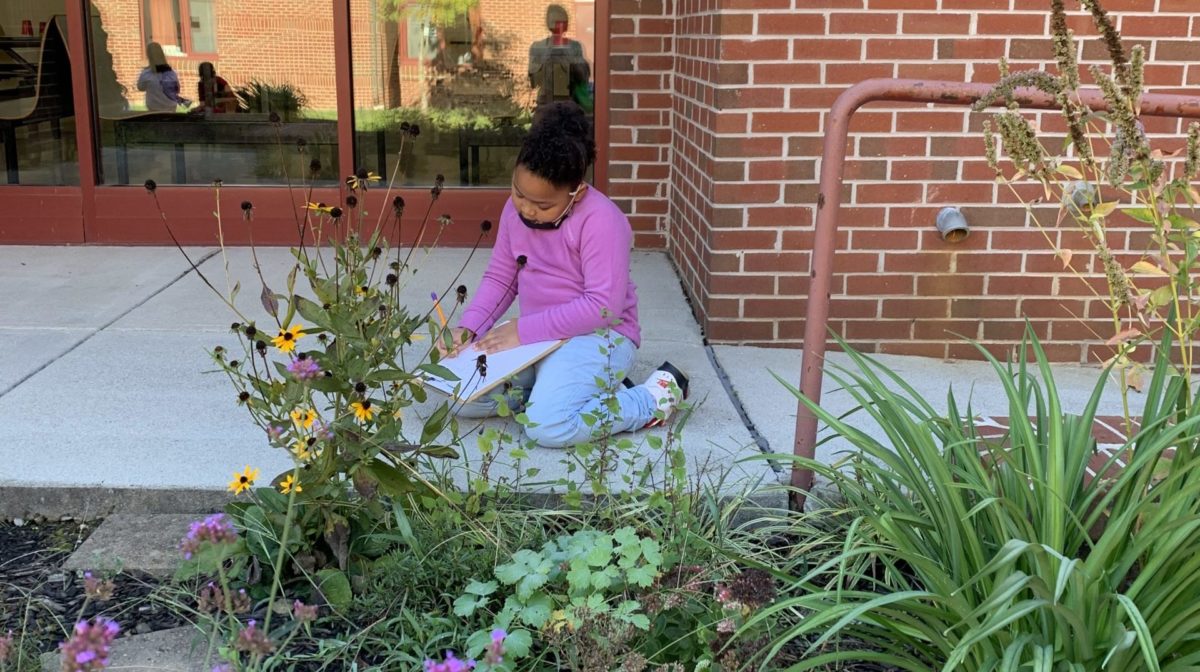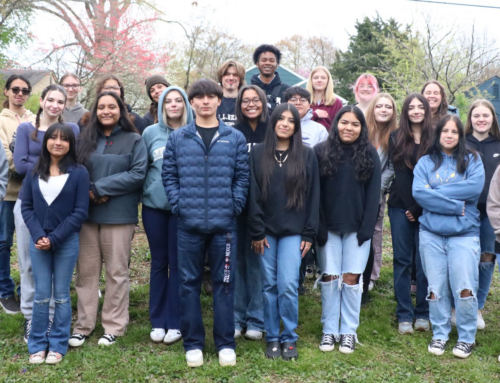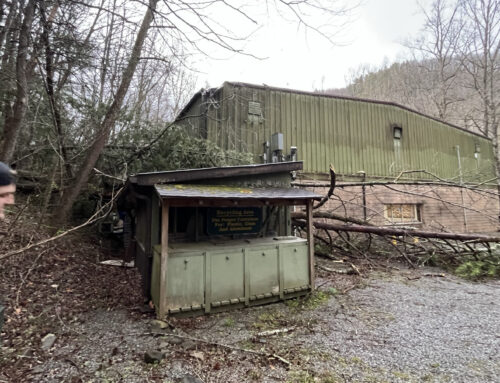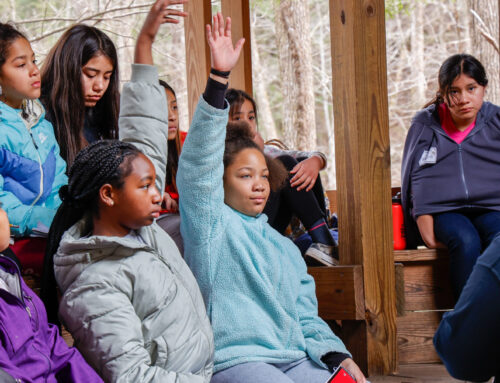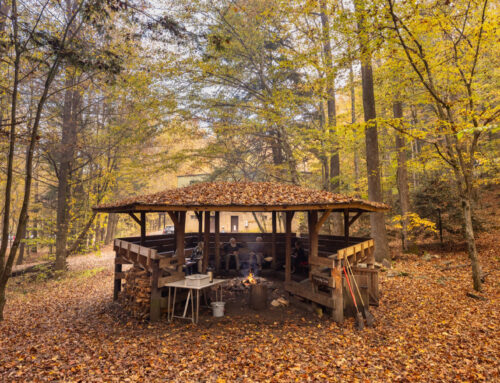When’s the last time you made a new friend?
For students in Elizabeth Cade’s second grade class at Christenberry Elementary in Knoxville, making new friends is as simple as heading outside with intention.
Ms. Cade led her class in a popular Tremont activity titled “My New Best Friend.” In this activity, students identify something in nature that they observe, write about, discover the ways in which they are similar, and introduce to others as their new best friend.
“I thought that my students might struggle with finding a friend that wasn’t human,” Ms. Cade said. “They actually had difficulty choosing just one new friend to write or draw about.”
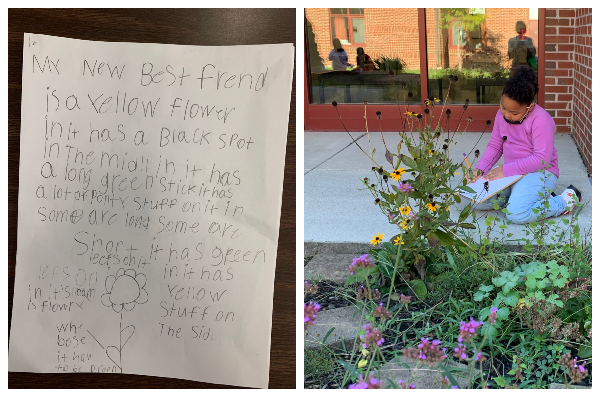 New best friends could be anything found in Christenberry’s schoolyard. One student befriended a yellow flower with a black center – perhaps a black-eyed Susan.
New best friends could be anything found in Christenberry’s schoolyard. One student befriended a yellow flower with a black center – perhaps a black-eyed Susan.
“It was also interesting to see how students described their new friend. Most just listed the physical features or did a simple drawing. They were able to introduce their new friend to a partner afterwards,” Ms. Cade shared.
“The beauty of this kind of observation is that it gets students looking closely at things that they might have overlooked before,” said Annie Roth, Manager of the Teacher Network at Tremont. “How many times has that student walked by that flower without really noticing it?”
Ms. Cade has been using Tremont activities in her classroom for years. She first came to Tremont for a Teacher Escape Weekend in 2018 and has been a regular participant in teacher workshops and the Schoolyard Network, a group of educators that started meeting during the pandemic to share best practices, lesson ideas and encouragement.
For their next Tremont-inspired activity, Ms. Cade’s class headed to their outdoor classroom to explore new worlds.
“The students were so excited and very engaged to explore their tiny habitat,” Ms. Cade said. “I set some boundaries, gave them something to sit on so they were more comfortable, and let them get to know their tiny habitat. It took them a while to settle into a place but once they did, they found some fascinating things.”
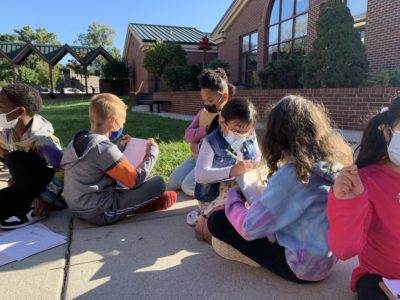 One student said, “I found some small purple tomatoes. I know they are not really tomatoes, but I don’t know what they are so that’s the closest thing I could think of right now. I drew a bunch of question marks beside it. I’m going to go home and do some research to find the answer.”
One student said, “I found some small purple tomatoes. I know they are not really tomatoes, but I don’t know what they are so that’s the closest thing I could think of right now. I drew a bunch of question marks beside it. I’m going to go home and do some research to find the answer.”
“And therein lies the magic,” Annie said. “When kids explore and ask questions, they become emotionally invested. When they get curious, they are hungry to learn more and suddenly learning becomes fun!”
Opportunities for further exploration:
- Explore more activities that can be done with students of all ages – from home or the schoolyard – in our Weekly Wonder video series led by Tremont naturalists.
- Educators are invited to share creative ideas, learn from each other’s experiences, and develop a network of support by joining the Schoolyard Network.
- Give your kids the experience of wonder and discovery by sending them to Tremont. Explore our summer youth programs.


